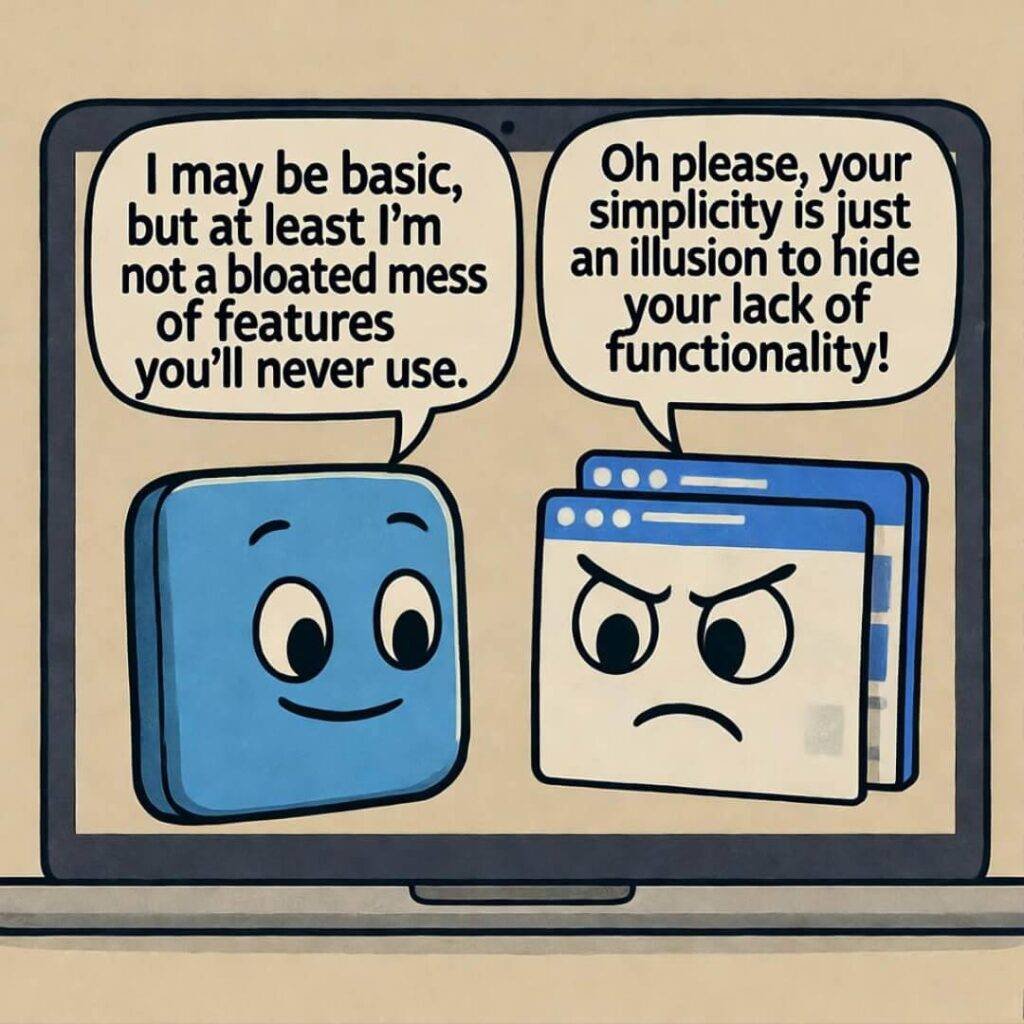Man, how to choose the right SaaS for your startup is like navigating a foggy highway at dawn – I remember sitting here in my cramped Brooklyn apartment last winter, the heater clanking like it’s about to give up, staring at my laptop screen till my eyes burned, trying to pick tools that wouldn’t bankrupt my little side hustle before it even took off. Seriously, I blew through three different project management apps in one month, each promising the moon but delivering, like, a handful of dust – one even crashed during a pitch call, leaving me scrambling with notes on napkins from the corner deli. Anyway, as an American who’s been through the startup grinder, complete with late-night pizza runs and that constant buzz of city sirens outside, I’m spilling my guts on this 2025 guide. It’s flawed, yeah, because I’m no guru, just a guy who’s made dumb picks and learned the hard way. But hey, if you’re bootstrapping like I was, choosing the right SaaS for your startup can make or break your momentum – think about it, the wrong one drains your wallet and sanity, while the right one feels like rocket fuel.
Figuring Out Your Startup’s Needs When Choosing the Right SaaS
First off, you gotta dig deep into what your biz actually requires, right? Like, I was in this coffee shop in Manhattan the other day, steam from my latte fogging my glasses, jotting down pain points on a crumpled receipt because my note app – irony alert – was glitching again. Start by listing your core problems: is it team collab that’s sucking, or customer tracking that’s all over the place? From my screw-ups, I learned to map out workflows, budget limits, and growth dreams before even glancing at shiny demos. This step in selecting SaaS for startups stops you from grabbing the first flashy thing, y’know? According to one solid guide, identify requirements by assessing challenges, workflows, and scalability – super key for us small fries.

Your 9-5 is teaching you to stay broke. Here’s how I’d use AI to …
Pain Points and How They Mess With Choosing the Right SaaS for Your Startup
Oh man, the pain points – mine were epic. Picture this: early 2025, I’m huddled under a blanket in my chilly living room, the scent of takeout Chinese lingering, realizing my email tool was spamming clients because it didn’t integrate with my CRM. Embarrassing as hell, I tell ya. So, tip from my flawed playbook: quiz your team, if you have one, or just self-reflect on what’s breaking. For startups, focus on scalability – will this SaaS grow with you, or bail when you hit 50 users? I once picked a cheap one that capped at 10, and switching cost me weeks. Contradiction time: I love free trials, but they lure you in then hit with upgrades – cautiously optimistic, though, ’cause they let you test real.
Researching and Comparing When Picking the Right SaaS for Your Startup
Alright, dive into the hunt – I spent hours scrolling reviews while the subway rumbled beneath my feet on commutes, phone screen glaring in the dim light. Build a shortlist: Google stuff like “best SaaS tools for startups 2025,” check sites, read user stories. Compare pricing, features, support – one guide nails it with steps on researching providers and demos. For me, I compared like five CRMs, and dude, the differences in integration blew my mind. Some lists out there highlight top picks like Asana for projects, Slack for chat, HubSpot for CRM – solid for startups scaling fast.

Anthropomorphising Technology: AI Avatars & Robots — FRANKI T
The Tricky Bit of Evaluating Features in SaaS Selection for Startups
Features, ugh – I got suckered by bells and whistles once, like this analytics tool with AI bells that I never used, wasting bucks while my bank app pinged low balance alerts. Prioritize must-haves: ease of use, mobile access, cuz who isn’t on the go? From experience, test UI in trials – if it’s clunky, bail. One resource stresses intuitive interfaces and responsiveness. But here’s my contradiction: fancy features sound great, but for startups, simple wins – until it doesn’t, and you outgrow it. Anyway, weave in secondary keywords like best SaaS tools for startups by category.
Cost, Security, and All That Jazz in Choosing the Right SaaS for Your Startup
Money talks, right? I calculated ROI wrong on my first pick, ending up over budget by like 30%, sitting at my kitchen table crunching numbers with calculator app crashing – poetic. Understand pricing models: per user, tiers, hidden fees. Aim for 25-30% savings with good management, as some tools suggest. Security? Non-negotiable – I had a scare with data leak vibes, heart pounding as I checked logs. Look for encryption, compliance like SOC 2.
Scaling and Integrating: Key to Long-Term SaaS Picks for Startups
Scalability hit me when my user base doubled overnight – tool choked, me panicking in a park bench, birds chirping mockingly. Choose adaptable ones with APIs for integrations – connects to your stack seamlessly. For 2025, think AI-enhanced tools, but don’t overdo. Reviews from similar startups? Gold – I read tons, some praising Jotform or Notion for ease.

20+ AI Business Trends For 2025! – by Gennaro Cuofano
Wrapping Up This Mess on How to Choose the Right SaaS for Your Startup
So yeah, choosing the right SaaS for your startup ain’t perfect science – I still second-guess mine sometimes, like is this CRM really the one, or am I just comfy? But from my US perch, with fall leaves crunching outside and that crisp air hitting my face on walks, I’ve learned to blend gut with research. Mistakes? Plenty, like that time I ignored reviews and got burned. Surprising win: switching to scalable picks boosted my efficiency big time. Anyway, try it out, start small, iterate. Genuine suggestion: hop on a free trial of something from those lists, see if it clicks for your startup SaaS needs. What do ya think, hit me up in comments if you’re as confused as I was. Oh wait, and then there’s this other thing about AI integrations, but nah, that’s for another ramble. Typo alert: intergrations? Wait, integrations. Chaos ensuing, brain fried, but hey, that’s startup life. End scene.


